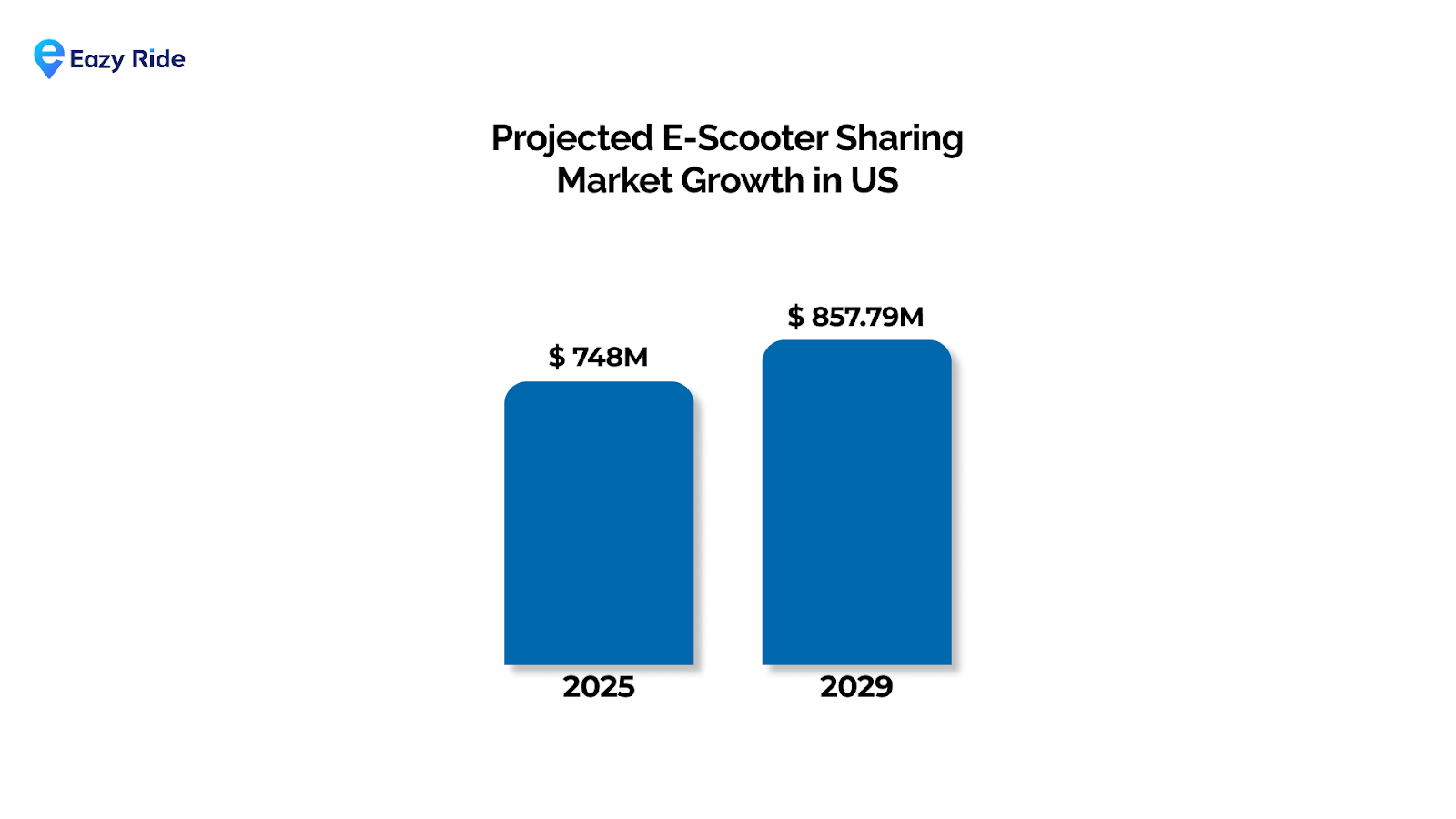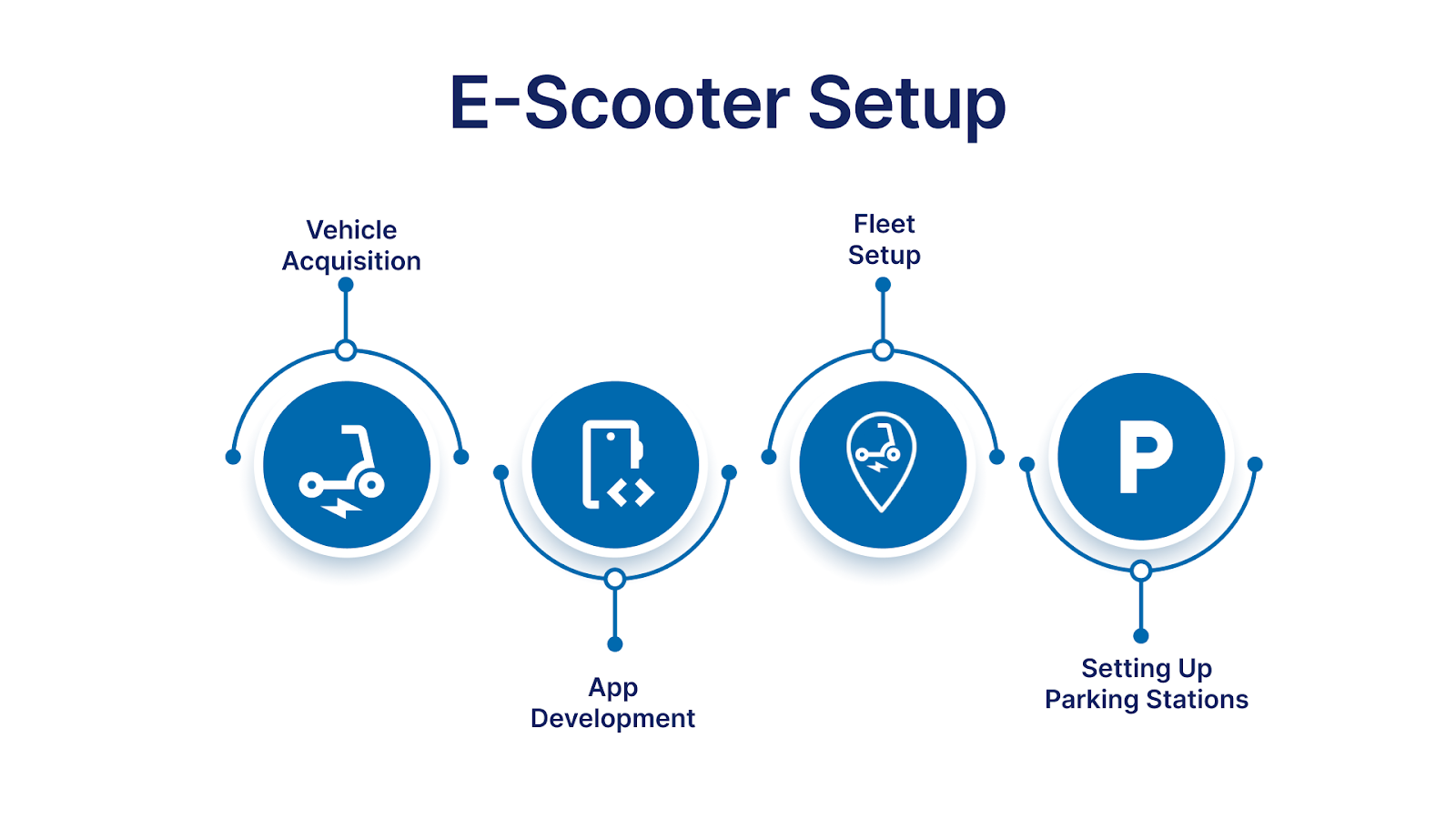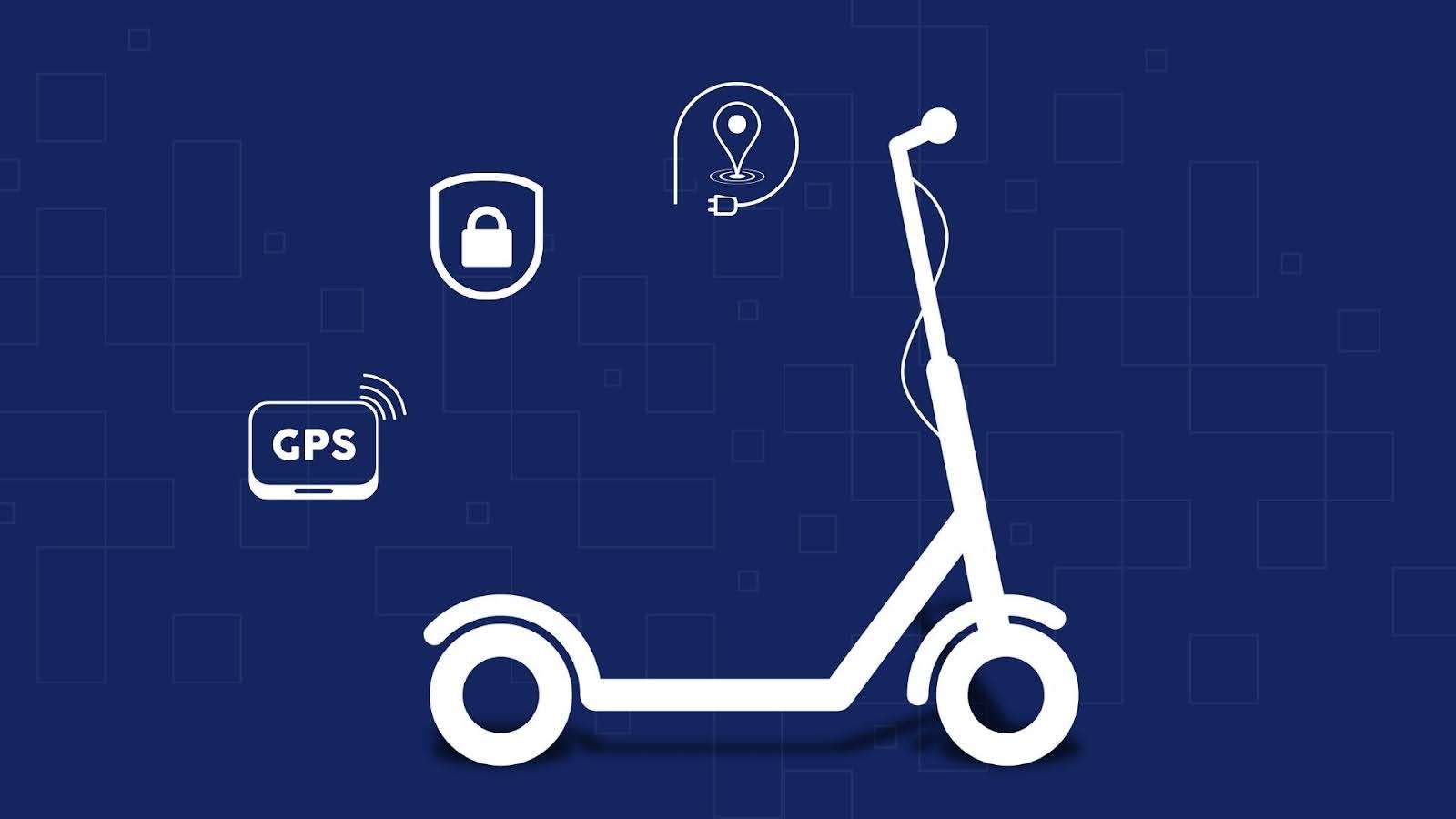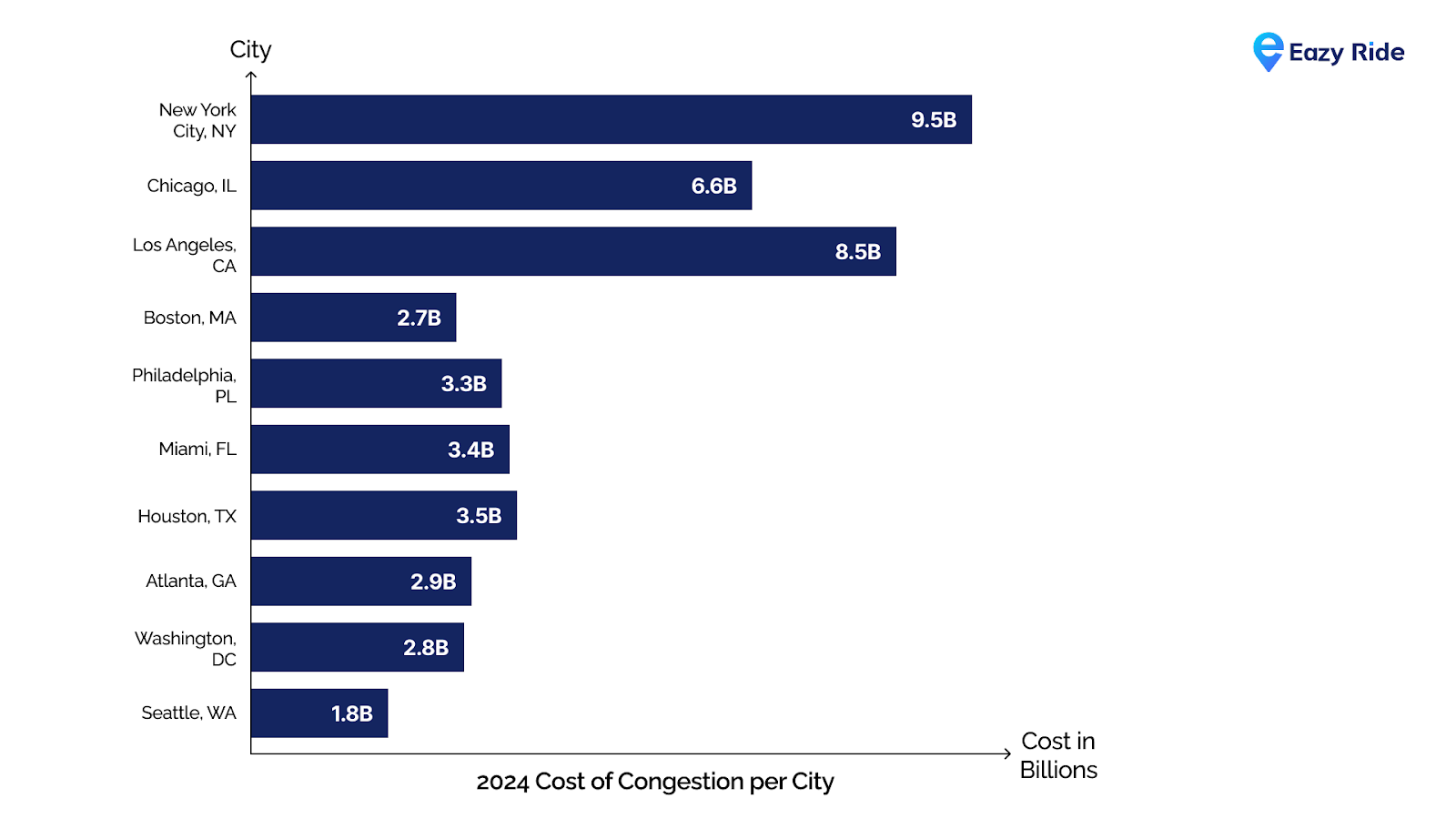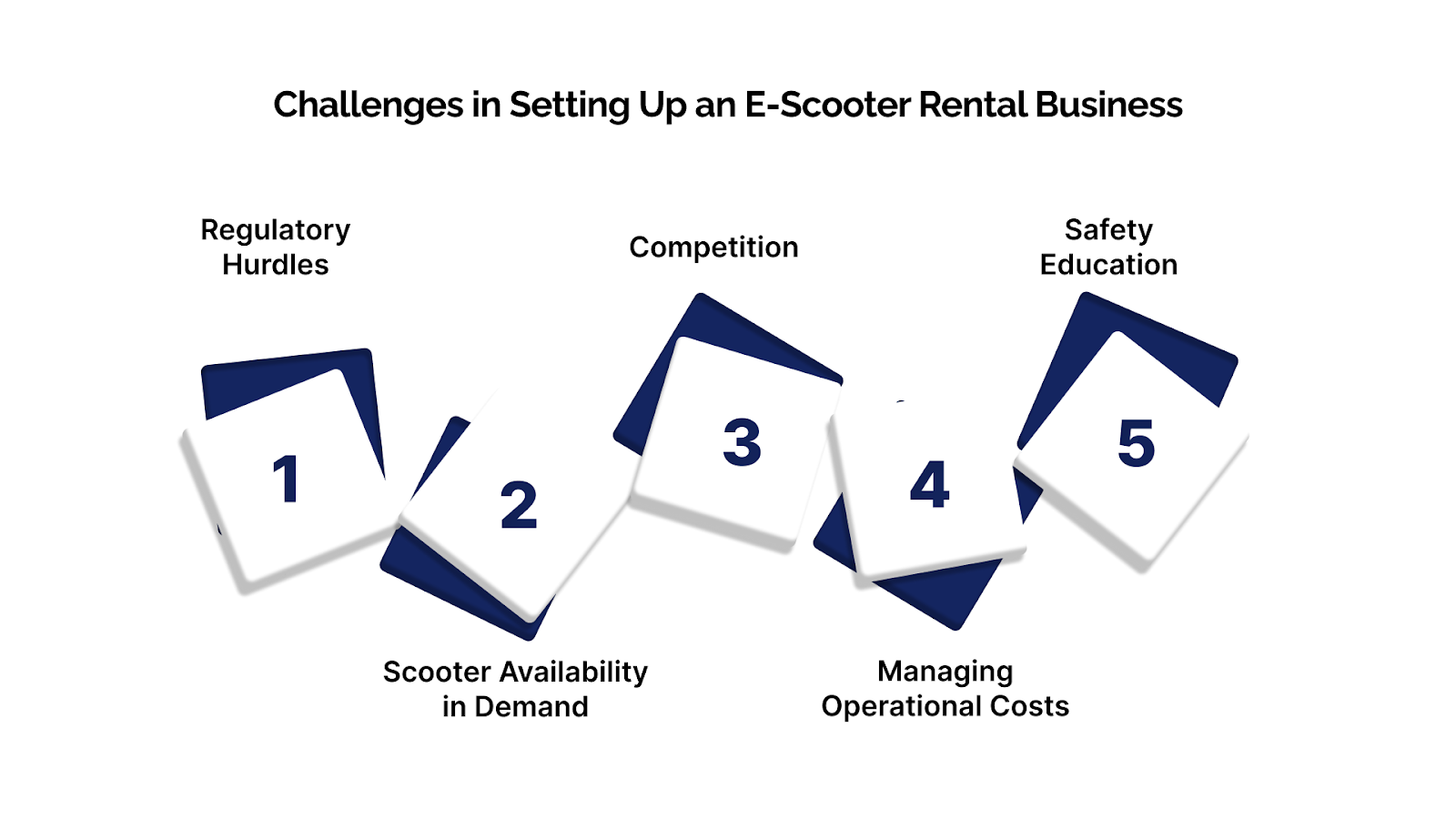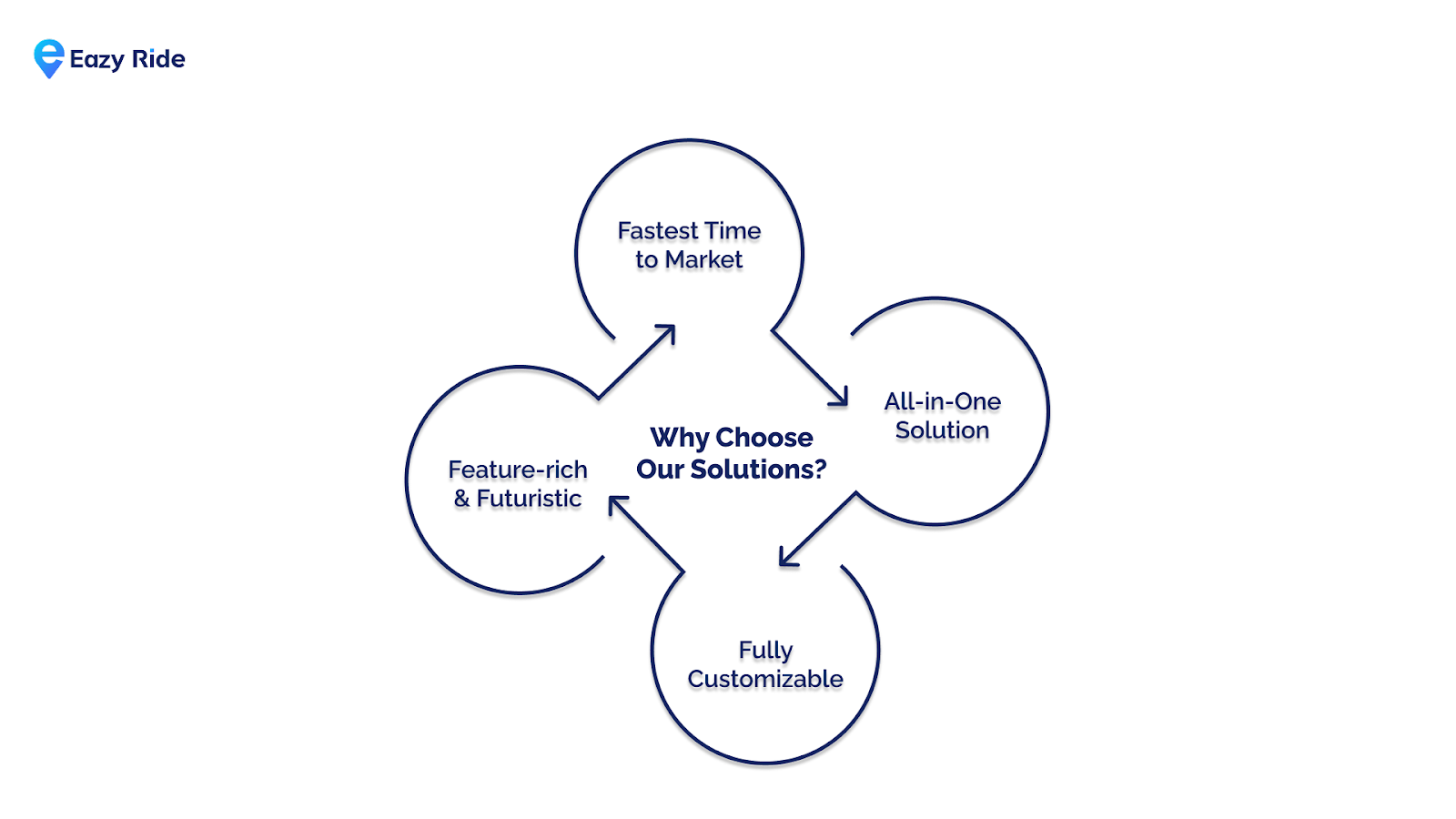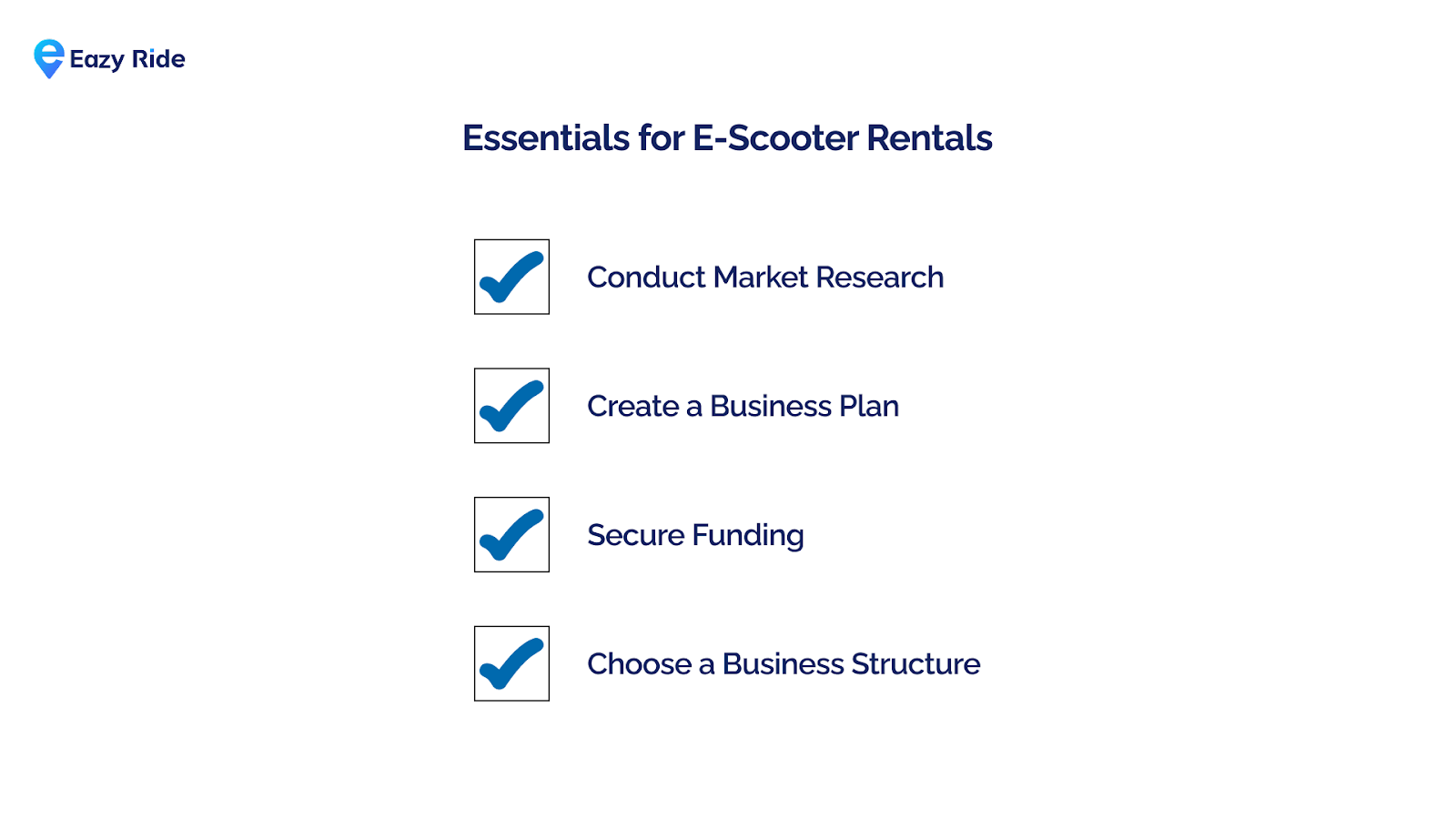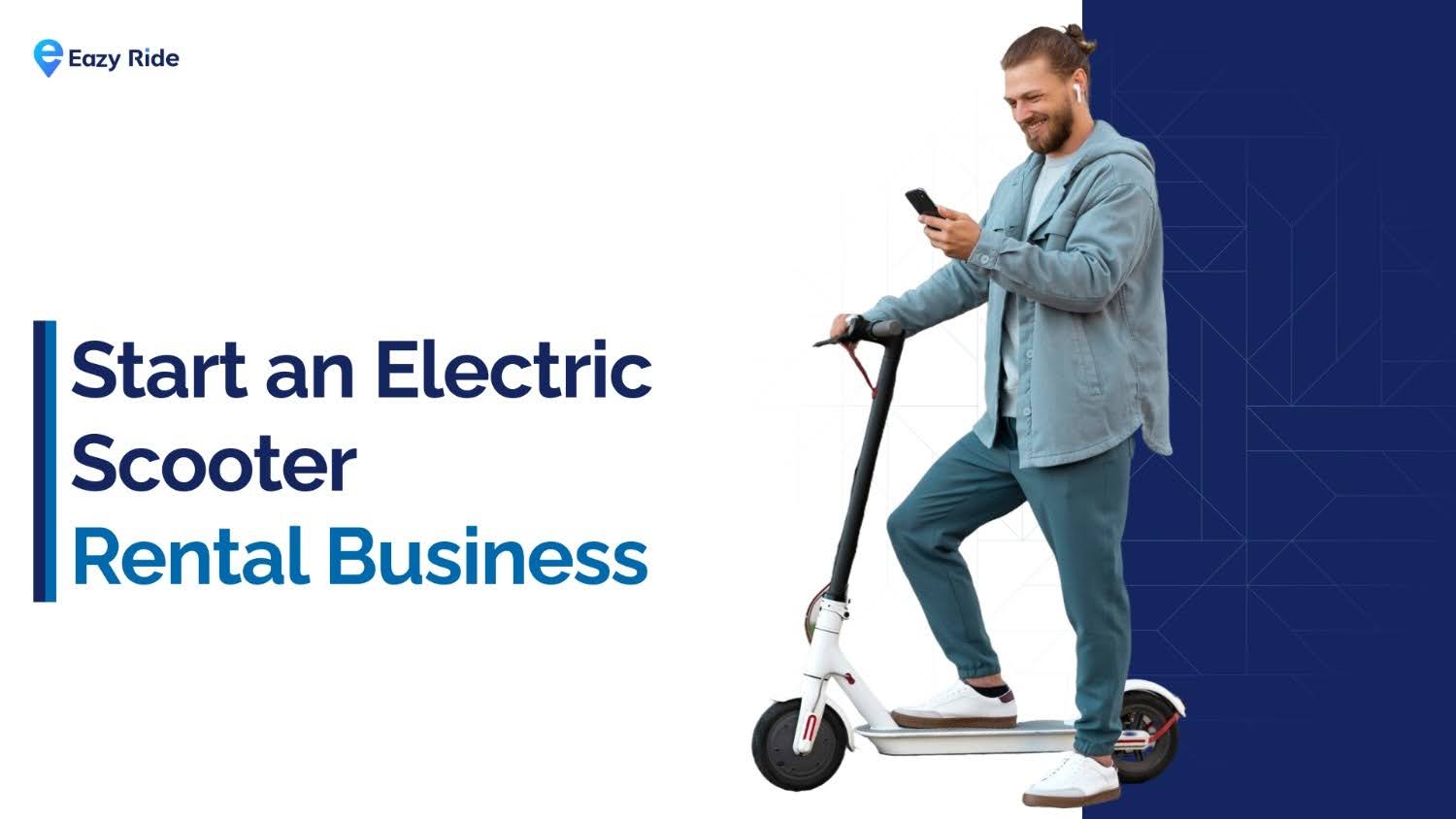 AllMicro Mobility Model
AllMicro Mobility Model
How to Start an Electric Scooter Rental Business
Looking to get ahead in the future of urban mobility? Electric scooter rentals are becoming a popular and practical choice as cities look for efficient, eco-friendly ways to get around.
In the U.S. alone, the e-scooter sharing market is projected to generate over $ 748 million in revenue by 2025. Even more promising, it’s predicted to grow at an annual rate of 3.48% through 2029, reaching a market size of nearly US$858 million.
With traffic congestion increasing, fuel prices rising, and a stronger push for sustainable options, electric scooters offer a convenient and green way to travel short distances. This guide will help you understand the market, build your fleet, and attract your first customers—positioning you to capitalize on this exciting opportunity.
What is an E-Scooter Rental Business?
An e-scooter rental business provides customers with short-term access to electric scooters, typically through a mobile app or kiosk system. Users can rent scooters on-demand for commuting, running errands, or simply exploring urban areas—usually paying by the minute, hour, or trip. These services are especially popular in cities where traffic congestion, parking issues, and environmental concerns are pushing people to look for more efficient and eco-friendly ways to get around.
In 2025, this business model is gaining even more momentum. Several factors are fueling its rise:
- Urbanization and Traffic Woes: As urban cities grow denser, traditional transportation methods are falling short. Scooters offer a compact, quick solution to last-mile connectivity problems.
- Eco-Conscious Consumers: With climate change at the forefront of people’s minds, more people are choosing electric mobility over fuel-based options. Scooters produce zero emissions and leave a smaller carbon footprint.
- Supportive Government Policies: Government incentives, subsidies, and infrastructure development for electric vehicles are making entering the market easier and more profitable.
- Low Entry Barrier: Compared to other transportation startups, scooter rentals require less capital and are easier to scale in targeted local areas before expanding.
With rising fuel costs, shifting urban lifestyles, and a push toward sustainability, the electric scooter rental business is a fast-growing opportunity for forward-thinking entrepreneurs.
Prerequisites to Start an Electric Scooter Rental Business
Before you start an e-scooter rental business, it’s essential to take measures to ensure you’re fully prepared. These initial actions will provide a strong foundation, ensuring you’re compliant with local regulations and are equipped with a solid business strategy. Here’s what you need to focus on:
Conduct Market Research
Before you dive into the scooter rental business, it’s essential to understand your local market and the demand for electric scooters. In the U.S., some cities have a robust demand for e-scooter rentals, while others may be less receptive due to infrastructure or regulatory concerns.
Understand the Demand: Research the demand for electric scooters in your target area. Is there a large population of commuters, students, or tourists who could benefit from a scooter rental service? Are there already competitors in the market, and what are their strengths and weaknesses?
Regulatory Landscape: Investigate local regulations regarding electric scooters. In the U.S., cities have varying rules about where scooters can be operated (sidewalks vs. roads), speed limits, and parking. Many cities also require specific permits or licenses to operate e-scooter rentals, which may come with annual fees and operational rules.
Create a Business Plan: A well-thought-out business plan is essential to guide your decisions. This plan will help you define the structure of your business and your goals while ensuring that you can achieve long-term profitability.
Outline Your Goals: Clearly define your business objectives, such as the size of your fleet, the pricing model, and which areas of the city or region you will service. Your business goals should align with the demand you identified in your market research.
Financial Projections: Calculate your startup costs, which may include the purchase of scooters, infrastructure setup (charging stations, storage), technology costs (rental software, payment systems), and staffing. Project future revenues and expenses to understand how long it will take to break even and become profitable.
Secure Funding: When you start an e-scooter rental business, it requires significant upfront capital. Whether funding the business yourself or seeking external financing, having a clear financial plan is crucial.
Calculate Startup Costs: Identify the initial capital needed, including the cost of purchasing the scooters, infrastructure for storing and charging the fleet, app development, and other operating expenses.
Explore Funding Options: Consider different funding sources, such as small business loans, venture capital, angel investors, or crowdfunding platforms. Some cities may offer grants or other incentives for sustainable transportation solutions that you can look into.
Choose a Business Structure: Selecting the right business structure is essential for your company’s legal and tax considerations. The most common structures for electric scooter rental businesses in the U.S. are LLCs or corporations.
Select Legal Structure: Decide whether to operate as an LLC (Limited Liability Company), which offers liability protection and tax flexibility, or a C-Corp, which is often chosen by businesses seeking venture capital funding.
Register Your Business: After selecting your structure, register your business with your state’s Secretary of State office. You’ll also need to obtain a business license and vehicle insurance. Depending on your city, you may also need to apply for additional permits related to operating electric scooters.
Now that you have a clear understanding of the prerequisites to launching your electric scooter rental business, it’s time to move forward with the next phase: putting your plans into action.
Step-by-Step Process for Setting Up Your E-Scooter Rental Business
One of the most crucial aspects of starting an e-scooter rental business is ensuring you have the right equipment and infrastructure in place. Here are the essential details to consider for each of these components:
Step 1: Purchasing the Vehicles
Choosing the right scooters is critical to the success of your business. Your fleet will directly impact your operational costs, customer satisfaction, and the long-term sustainability of your business.
Consider the following features to choose the right scooters:
- Durability: Since your scooters will be used frequently by different people, it’s essential to pick models that are sturdy and can withstand heavy use.
- Battery Life: The scooter’s battery life is crucial. Look for models that offer a range of 20-40 miles per charge, depending on your local demand and pricing model.
- Maintenance and Repair: Choose scooters that are easy to maintain and repair. Avoid overly complex designs that require specialized parts or technicians.
- Speed and Safety Features: Make sure the scooters you choose comply with local speed regulations and come equipped with safety features like lights, reflective surfaces, and functional brakes.
Where to Buy Scooters:
- Direct from Manufacturers: Many scooter manufacturers offer bulk purchasing options for rental businesses. Companies like Segway-Ninebot and Roadrunner scooters manufacture models that are specifically designed for high-use rental fleets.
- Wholesale Suppliers: You can also consider wholesale suppliers like Gotrax or Scooter Wholesales, which offer a variety of scooter models at competitive prices.
- Second-hand Scooters: If your budget is tight, purchasing second-hand scooters can be an option. Ensure the scooters are in good working condition and check their battery life and structural integrity before purchasing.
2. Developing an App for the User
Before we discuss the key features of a user app for your e-scooter rental business, let’s first understand why having a dedicated app is essential. The app is the main interface between your customers and your service, enabling them to interact seamlessly with your scooters.
Without an efficient, easy-to-use app, even the best scooters and pricing models can struggle to attract and retain customers.
Key Features to Include in the User App:
- Easy Scooter Location and Availability: Your app should have a map feature that shows the locations of available scooters in real time. Users should be able to view not just the nearest scooters but also the battery levels and availability status of each scooter.
- Rental Process: Make sure your app includes a simple process for unlocking, using, and locking the scooter. Users should be enabled to scan a QR code or use Bluetooth to unlock a scooter, and securely lock it when finished with the ride.
- Payment Integration: The app should support multiple payment methods, such as credit/debit cards, mobile wallets, or prepaid credits. The payment system should be straightforward and offer transparency, with clear breakdowns of costs per minute or per ride.
- Account Handling: Users should be able to create, manage, and edit their accounts in the app. This includes saving payment methods, reviewing ride history, tracking loyalty points (if any), and adjusting preferences.
Ways to Get the App:
- Develop Custom App: Building a custom app gives you full control over features, but it’s costly, time-consuming, and requires ongoing maintenance. It can take several months to develop and delay your time to market.
- Use Existing Platforms: Opting for a white-label solution like Eazy Ride saves time and money. It provides a ready-to-launch app with seamless booking, scooter location, and payment features, allowing you to brand it as your own and launch quickly.
3. Setting Up Software for Fleet Management
When it comes to managing a large fleet of electric scooters, relying on manual tracking or basic spreadsheets won’t suffice. Fleet management software is a vital tool that helps you monitor and manage the entire fleet in real time.
The software can automate much of the back-end work, such as charging and maintenance alerts, making it much easier to scale and manage operations as your business grows.
Key features to look for in fleet management software:
- Real-Time Tracking: Fleet management software should offer real-time tracking of each scooter’s location. This allows you to monitor scooter availability across your service area.
- Data Analytics: Good fleet management software should provide valuable insights through analytics, such as ride statistics, customer behavior, and scooter usage trends.
- Remote Locking and Unlocking: The software should allow you to remotely lock or unlock scooters as needed, for example, in the case of a lost or stolen scooter or when it’s time to perform a check-up.
- Inventory Management: This enables you to track the status of each scooter, including its location, battery level, and whether it’s in need of maintenance.
Ways to Get Fleet Management Software:
- Build Custom Software: You can hire a software developer to create a custom fleet management system tailored to your needs. This will allow you to fully control the system and incorporate unique features that match your business. That said, it can be costly, labor-intensive, and needs regular upkeep and improvements.
- Use Off-the-Shelf Solutions: For a more efficient and cost-effective option, Eazy Ride offers a ready-made fleet management solution tailored specifically for scooter rental businesses. With real-time tracking, maintenance management, and easy app integration, Eazy Ride simplifies fleet operations and helps you launch quickly, reducing development costs.
4. Setting Up Parking Stations
The setup of parking stations plays a critical role in how smoothly your operation runs. There are two main options for parking: docked and dockless systems.
- Docked stations are fixed parking areas where scooters are physically locked into designated docks or racks. Customers must return the scooters to these stations after use, and they can only pick them up from a docked location.
- Pros: This helps prevent scooters from being abandoned in inappropriate places and reduces clutter.
- Cons: High setup and maintenance costs may be a concern.. Also, the fixed locations might limit the flexibility for customers who may need a scooter elsewhere.
- Dockless stations allow users to pick up and drop off scooters anywhere within a defined service area, using geolocation via a mobile app. These scooters are not tied to any physical station,
- Pros: The system is more scalable, as you don’t need physical stations, just appropriate geofencing and charging infrastructure.
- Cons: You’ll need to deploy a team to regularly redistribute the fleet to ensure accessibility in high-demand areas.
Considerations for Setting Up Parking:
- Strategic Location Selection: Whether you choose docked or dockless, choose locations with high foot traffic, such as transportation hubs, shopping areas, parks, and tourist attractions.
- Charging Infrastructure: Ensure that your parking stations are equipped with charging facilities, either through fixed charging stations or mobile charging units that can be transported to various locations.
- Compliance with Local Laws: In many cities, dockless scooters must be parked in designated areas. Be sure to understand local parking rules to avoid fines or penalties for improper parking.
With a solid foundation in place, you’re ready to move forward and focus on attracting customers. The next step is to develop an effective marketing strategy that will help you stand out in a competitive market.
| Looking for a complete solution? Explore all the features of Eazy Ride and power your scooter rental service with confidence. |
Marketing Your Electric Scooter Rental Business
Marketing is essential to making your electric scooter rental business known and attracting customers. In a competitive market, effective strategies will help you build brand awareness, drive engagement, and increase loyalty.
Here are key tactics to market your business successfully:
- Build an Online Presence: Create a mobile-friendly website with essential info like pricing and availability. Stay active on social media to share promotions and updates, using engaging content like videos to attract attention.
- Collaborate with Local Businesses and Events: Partner with local businesses to offer discounts or cross-promote services. Sponsor local events to increase visibility and engage with the community.
- Leverage Customer Reviews: Encourage reviews from satisfied customers and offer incentives like discounts for feedback. Share positive testimonials on your social media to build trust.
- Utilize SEO: Optimize your website for local SEO and set up a Google My Business profile. Use location-based keywords to ensure your business appears in local searches.
- Engage with the Community: Sponsor or participate in eco-friendly events and community activities to highlight your commitment to sustainability and interact with potential customers.
By using these marketing strategies consistently, you’ll be able to create brand awareness and attract a loyal customer base. Personalize these approaches to your target audience, track performance, and make adjustments to keep your business ahead of the competition.
However, even with strong marketing efforts, there are certain challenges that come with setting up and running an electric scooter rental business. Let’s explore these challenges.
Traffic congestion in the U.S. cost the economy $74 billion in 2024, with cities like New York, Chicago, and Los Angeles feeling the most significant impact. In NYC alone, drivers lost $1,826 each.
What’s more? Ten U.S. cities made the Top 25 worst congested cities in the world as employees return to the office. This creates a prime opportunity for e-scooter rental businesses to provide a solution.
Discover the staggering cost of congestion and explore how this growing issue presents a profitable opportunity to reduce traffic, save money, and offer an eco-friendly solution for commuters.
Source: INRIX 2024 Global Traffic Scorecard
Challenges in Setting Up an E-Scooter Rental Business
Starting an e-scooter rental business comes with its fair share of challenges. However, with the right strategies in place, these obstacles can be overcome, ensuring a smooth launch and sustainable growth.
1. Regulatory Hurdles
Many cities in the US have strict regulations regarding e-scooter rentals, including permit requirements, speed limits, parking restrictions, and insurance policies. Understanding these laws can be time-consuming and complex.
Solution: Consider partnering with a legal advisor or consultant who specializes in micromobility regulations to speed up the process and avoid costly mistakes.
2. Ensuring Scooter Availability in High-Demand Areas
One of the biggest challenges is ensuring that scooters are available in high-traffic areas where demand is greatest. Without a strategic approach, scooters can end up in areas with low usage, reducing profitability.
Solution: Leverage fleet management software like Eazy Ride, which offers powerful demand forecasting and real-time tracking of scooter usage patterns. This allows you to dynamically redistribute your fleet to high-demand areas.
3. Competition
The electric scooter rental market is becoming more competitive, with large players dominating the market. Competing with established brands and attracting customers can be difficult.
Solution: Differentiate your business by focusing on customer service, offering competitive pricing, and building strong local partnerships. Focus on niche markets such as tourists, local commuters, or eco-conscious riders to build a loyal customer base.
4. Managing Operational Costs
The costs involved in setting up and maintaining the business, including scooter procurement, software, charging stations, insurance, and maintenance, can quickly add up, especially in the early stages.
Solution: Begin with a small fleet to keep initial costs manageable, then scale up gradually as demand grows. Utilize solutions like Eazy Ride, which provides performance analytics to help you monitor usage and adjust your fleet size accordingly.
5. Customer Education and Safety Concerns
Some customers may not be familiar with how to use electric scooters, or they may not follow safety guidelines, increasing the risk of accidents.
Solution: Provide clear instructions on how to use the scooters through the app and at pick-up locations. Include safety tips such as helmet use, local traffic laws, and proper parking. Consider offering helmets as an optional rental and educate users on safe riding through in-app messages or email campaigns.
By anticipating these challenges and implementing practical solutions, you can ensure that your e-scooter rental business operates efficiently and remains in demand.
Ready to Launch Your E-Scooter Business the Smart Way?
If you’re excited about entering the electric mobility space but unsure how to handle the tech side, we’ve got you covered. Eazy Ride offers a fast, flexible, and future-ready solution to get your business rolling in no time. From rider apps to fleet management and full customization, we make launching an e-scooter rental business simple and scalable.
Why Choose Our Solution?
- Fastest Time to Market: Go live in just 2 weeks with our ready-to-deploy platform so you can start earning while expanding.
- All-in-One White-Label Solution: Get a complete suite—a rider app, admin dashboard, and fleet ops app fully branded as your own.
- Fully Customizable to Your Needs: From features to branding, tailor the platform to match your vision and business goals.
- Feature-Rich & Future-Ready: Stay ahead with innovative tools like geofencing, group rides, ad banners, and powerful analytics.
Don’t waste time reinventing the wheel. Focus on scaling your scooter rental business while we handle the tech backbone.
Concluding Thoughts
Starting an e-scooter rental business is a great way to tap into the rising demand for sustainable and convenient urban travel. It takes thoughtful planning, whether you’re selecting the right scooters or building a smooth customer experience. But the real key is staying adaptable. With patience, smart decisions, and a strong focus on customer satisfaction, your business has every chance to succeed.
If you’re ready to start your electric scooter rental business, Eazy Ride is the perfect platform to help you get started. From launching to managing and scaling your fleet, Eazy Ride offers all the tools you need in one place.
With real-time analytics and easy fleet management, you can optimize your operations and grow efficiently. Contact us today and let us support your journey to success!
FAQs
1. What are the initial expenses involved in starting an electric scooter rental business?
The initial costs can vary depending on the size of your fleet and the area you plan to serve. Key expenses include purchasing electric scooters, setting up a fleet management system, and obtaining necessary permits or licenses.
2. How do I ensure the safety of my electric scooters and customers?
Ensuring safety involves regular maintenance of your scooters, providing clear safety guidelines for riders, and equipping your scooters with necessary safety features like helmets, lights, and reflective elements.
3. How do I determine the best locations for placing my electric scooters?
Choosing high-traffic areas with easy access to popular destinations like shopping centers, tourist spots, transportation hubs, and business districts is key. You’ll want to place scooters where people are most likely to need a quick, eco-friendly mode of transport.


